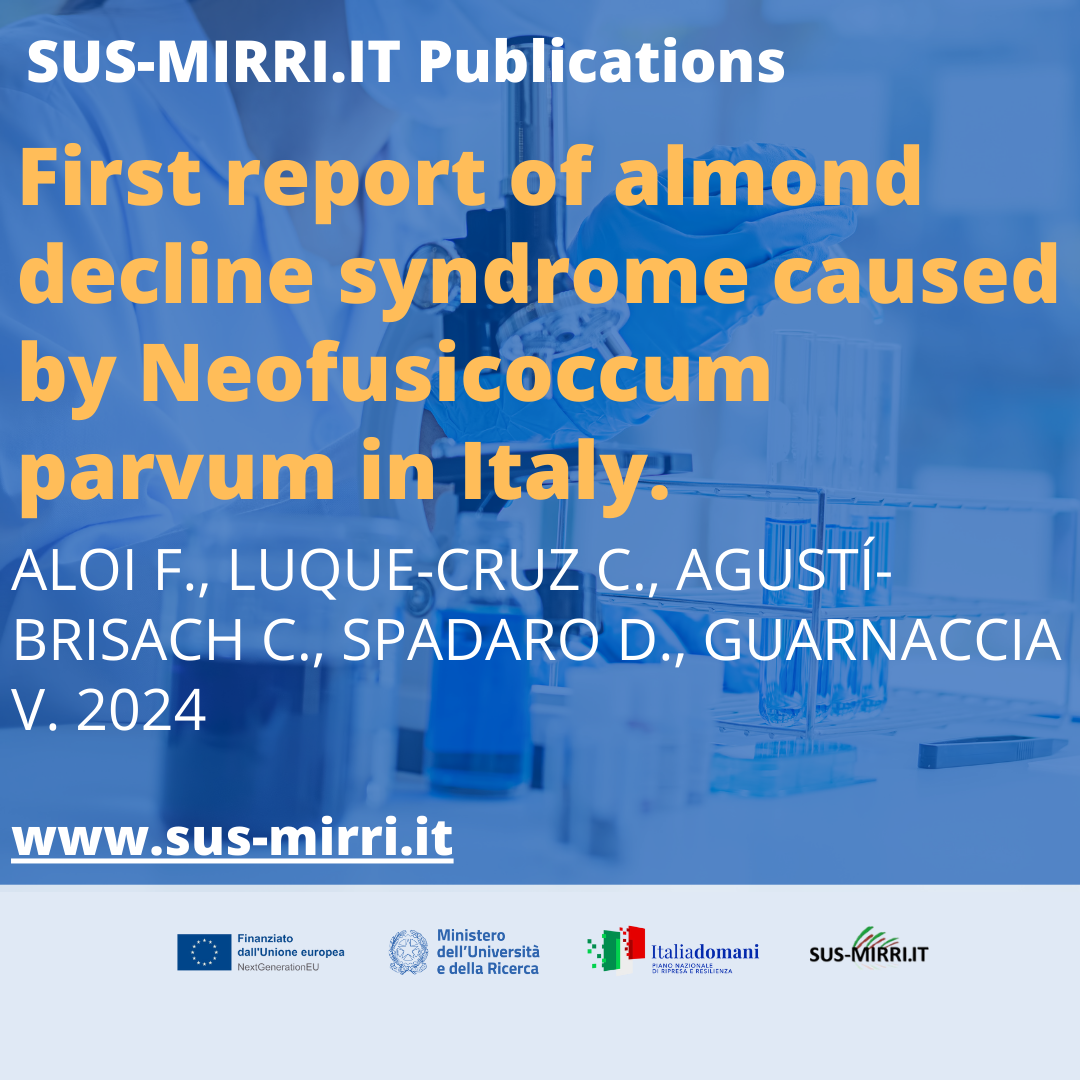ALOI F., LUQUE-CRUZ C., AGUSTÍ-BRISACH C., SPADARO D., GUARNACCIA V. 2024 First report of almond decline syndrome caused by Neofusicoccum parvum in Italy. Plant Disease in press DOI: 10.1094/PDIS-07-24-1538-PDN
Almond (Prunus dulcis Mill. D. A. Webb) is considered a major crop in the Mediterranean countries. In Italy, almond orchards cover an area of 54,939 ha, with a yield of 82,146 metric tons, with the cultivation widely distributed across several areas, such as southern regions (ISTAT 2023). During the summer of 2023, 3-year-old almond plants cultivated in a commercial orchard in southern Piedmont (44°32′41.92″N, 7°57′25.7″E) showed wilting and sudden decline of the whole plant with an incidence of 15%. Main symptoms were cankers on the trunk characterized by a chocolate-brown discoloration of wood, cambium, and even bark and occasional presence of gummy exudate. Symptomatic bark samples were rinsed with water, then blotted dry, and briefly soaked in ethanol for 15 s. Small pieces (5 × 5 mm) from the margin of necrotic areas were cut and placed on potato dextrose agar (PDA) plates amended with streptomycin sulfate (150 μg/ml). After incubation in the dark at 25°C for 4 days, fungal colonies emerging from the plated fragments were subcultured as monohyphal fungal cultures.
Read more at: https://apsjournals.apsnet.org/doi/10.1094/PDIS-07-24-1538-PDN



